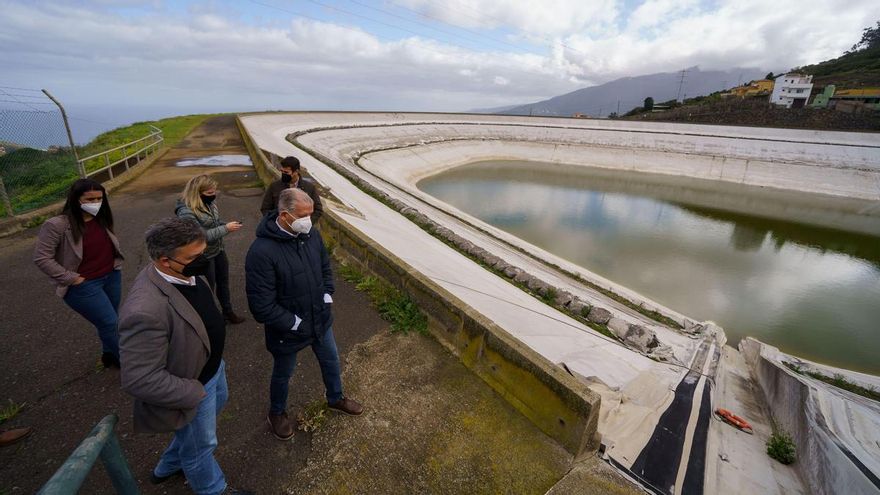
The Council of Tenerife allocates 1,076,000 euros to the re-waterproofing works of the Benijos irrigation water pond, in La Orotava, as announced by the island councilor for Agriculture, Livestock and Fisheries, Javier Parrilla (PSOE). The works will begin in April and will have a lead time of 11 months. “During this period, an alternative reservoir will be installed to guarantee the supply of water to the 560 farmers from the area», advances the insular councilor.
The 760 cubic meter tank that will be installed in the area while the works last will allow farmers in the area “to have the peace of mind of being able to irrigate their crops.” The mayor of La Orotava, Francisco Linares (CC)values the Cabildo’s commitment to the primary sector by meeting the demands raised from the City Council of La Orotava to help farmers and ranchers in the area: “Now an important investment is being made with this much-needed project to promote better water quality and use for all irrigators in the area.”
In 2017, after carrying out several follow-up tests, it was detected that the geomembrane of the raft of benijos presented in certain areas wear greater than 59%. “Hence the need to proceed with its re-waterproofing, which will be carried out through an innovative system of containment and stabilization of slopes,” details the Cabildo.
The work will also focus on the water inlets; in the crest of the pond, slopes, bottom and anchoring elements; the installation of a floating water intake; the demolition of infrastructures that today are useless, and in the modernization of gallery control equipment.
The raft of benijos It was the fifth of the ten built within the framework of the Plan de Balsas del Norte de Tenerife of the Insular Corporation. Its construction was carried out between 1985 and 1986being president Jose Segura Clavellwith the aim of serving as a regulating pond for the midlands of the municipality of The Realejos and La Orotava. It is prepared to receive water from the Salto Manuel, Las Palomeras and Caramujo galleries, as well as from the San Jerónimo well, which allows it to maintain the highest quality water from underground sources that Balten manages.
Since 1990, the benijos raft It has received several small repairs. However, its first and only waterproofing took place in 1986, with a guarantee period of 10 years, the counselor recalled.
The height it reaches at its crown is 549 meters above sea level and has a storage capacity of 206,373 cubic meters. In addition, it has a pond bottom surface of 6,469 square meters, a free surface at the maximum level of the reservoir of 21,018 meters, a crest surface of 22,082, and a surface of lateral slopes to be waterproofed of 17,296 square meters, which allows the raft has a supply capacity of 19 cubic meters per second of agricultural water.
Among other tasks, it will the extraction of sludge accumulated during more than 33 years of serviceas well as all the material from the 2009 runoff. Subsequently, a cleaning will be carried out, “avoiding the removal of the existing geomembrane”, and all the bags of gravel found at the crown of the various levels of the raft.
Javier Parrilla explains that into partial repair of the slopes damaged in 2009 Manual means were used to compact the area, not mechanical means, “which has caused pinching in the current geomembrane.” This problem will be solved by placing cementitious geocomposite, “an element of top-level technological innovation that will avoid problems in the following years.”
A system will be installed floating shots that the counselor ensures that the experience of Balten on similar rafts has shown that the use of these intakes causes the distribution better quality water“because it avoids supplying water that contains sludge in suspension or that is undergoing eutrophication processes, which are waters with a high level of organic load.”
Also, it will be the replacement of the existing valves of the water intakes and bottom drainage, with an investment of around 3,700 euros, and all areas of the pool will be waterproofed, starting with the crown anchors in the 539 meter perimeter. Subsequently, the geotextile will be installed and on it waterproofing geomembrane.















